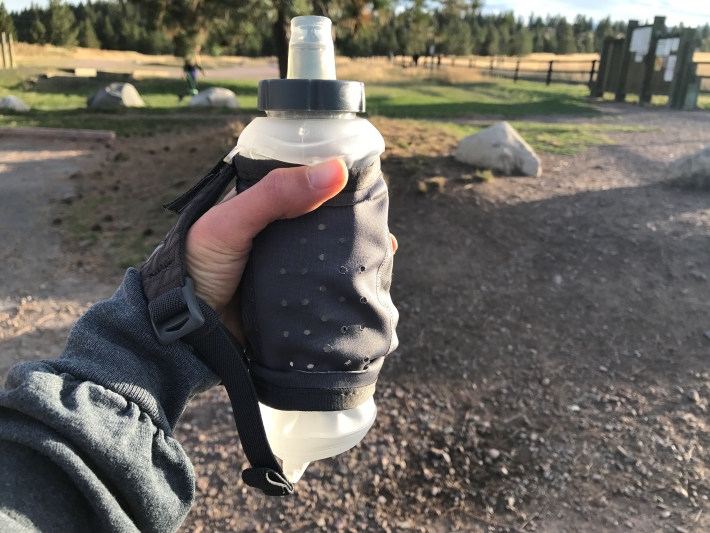Running is a sport that challenges both body and mind. From the casual jogger to the ultra-marathoner, there’s one universal truth: hydration is key. Proper hydration keeps runners energized, supports muscle function, and prevents fatigue. However, carrying enough water during a run is not always easy. Fortunately, advancements in running gear have transformed the way athletes can stay hydrated. Let’s explore these options and find out which is the best for you to conquer your runs, fully hydrated.
The Challenge of Staying Hydrated

Whether you’re running a 5K or conquering an ultra-distance trail, staying hydrated is one of the biggest challenges. You’re losing water and electrolytes through sweat, and if you don’t replenish them your performance and safety can suffer. Yet, the last thing any runner wants is to be bogged down by bulky water bottles or stop every mile for a drink.
Thankfully, today’s hydration gear offers lightweight, ergonomic, and innovative ways to carry water with you. From hydration vests to belts and handheld bottles, each piece of equipment serves a different purpose and can drastically improve your running experience.
Running Hydration Vest
The lightweight hydration vest has quickly become a favourite among long-distance runners. Designed like a lightweight backpack, it offers hands-free hydration by housing water in flexible reservoirs or flasks stored in pouches on the front and back of the vest. This gear allows for easy sips on the go and distributes weight evenly across the body, reducing strain.
Pros of Hydration Vests:
- Capacity: Vests often carry up to two litres of water, perfect for long-distance or trail running.
- Hands-free convenience: With bite valves or straws leading from the water reservoirs, runners can sip water without stopping or fumbling for a bottle.
- Storage space: Many hydration vests offer pockets for energy gels, keys, and other essentials.
- Even weight distribution: The vest design helps distribute the weight of the water evenly, preventing excessive strain on one side of the body.
Cons of Hydration Vests:
- Bulkier than other options: Even the most streamlined hydration vest will feel bulkier compared to a belt or handheld bottle.
- Price: Hydration vests can be pricier compared to belts or bottles, making them an investment for serious runners.
- Maintenance: Cleaning and drying the water reservoirs can be more cumbersome than cleaning simple bottles.
When to Choose a Hydration Vest?
If you’re someone who enjoys longer runs, and trail adventures, or you’re training for a marathon, a running hydration vest might be your best bet. The hands-free convenience, extra water capacity, and ample storage make it a smart choice for those serious about staying fuelled and hydrated over longer distances.
Hydration Belt
For runners who want to keep it simple, a hydration belt is a more minimalist approach. These belts wrap snugly around your waist and carry one or two small water bottles, typically positioned at your hips for easy access. Some belts also feature pouches for storing small essentials.
Pros of Hydration Belts:
- Minimal bulk: Hydration belts are smaller and lighter than vests, making them ideal for shorter distances or runners who prefer less gear.
- Accessibility: With bottles stored on your waist, it’s easy to grab a drink without breaking your stride.
- Affordability: Belts tend to be more affordable than hydration vests, making them a good option for recreational runners or those on a budget.
Cons of Hydration Belts:
- Limited capacity: Belts usually carry less water (typically around 500 ml to 1 litre), making them less suited for long-distance running.
- Fit issues: Finding the right fit is crucial. Some runners may find hydration belts bounce or shift during their run, especially if not properly fitted.
- Accessibility limitations: While you can grab the bottles relatively easily, the process isn’t as smooth as sipping from a hydration vest straw.
When to Choose a Hydration Belt?
If you’re running shorter distances or prefer a low-profile, lighter hydration solution, a belt is a solid option. It offers a good balance between hydration and convenience without feeling overburdened by extra gear. Just make sure it fits snugly to avoid any bouncing or chafing.
Handheld Water Bottles

For those who prefer to carry just the essentials, handheld water bottles are the simplest option. These bottles often come with a strap or ergonomic grip that makes them easier to hold while running.
Pros of Handheld Water Bottles:
- Lightweight and simple: There’s no extra gear involved—just a bottle you can easily carry and sip from whenever you need.
- Easy to refill: Handheld bottles are straightforward to refill at water stations during a race.
- Affordable: They are the most cost-effective hydration gear for runners.
Cons of Handheld Water Bottles:
- Limited capacity: You’re carrying as much water as you can hold in one hand, which is usually no more than 500 ml.
- Tiring over time: Holding a bottle for long distances can become uncomfortable or fatiguing for your arm.
- Disruptive to your running form: Some runners find that carrying a bottle alters their natural arm swing, which can affect form over time.
When to Choose a Handheld Bottle?
Handheld bottles are great for shorter runs, especially if you’re heading out for a quick workout or training in a well-supported race with frequent water stops. If you don’t mind holding something while you run, it’s a simple and effective way to stay hydrated without committing to more gear.
Choosing the Right Hydration Gear for You
Selecting the right hydration gear ultimately depends on your running habits, distances, and personal preferences. Here are a few tips to guide your decision:
- For long-distance or trail runners: The hydration vest is ideal for endurance athletes who need hands-free convenience, extra capacity, and additional storage for fuel or gear.
- For medium-distance or recreational runners: The hydration belt offers a more lightweight, streamlined option for those running between 5K to 10K. It’s also a good middle ground for runners who need more than a handheld bottle but don’t want the bulk of a vest.
- For short runs: If you’re heading out for a shorter run, a handheld water bottle is perfect for quick hydration without needing extra equipment. It’s simple, effective, and gets the job done.
Conclusion
Staying hydrated is crucial for peak running performance, and with the right gear you can keep your hydration levels up without sacrificing comfort or convenience. Whether you choose the hydration vest for long distances, the hydration belt for a minimalist approach, or a simple handheld bottle for shorter runs, the key is to find what works best for your unique needs. Hydrate, gear up, and conquer your runs with confidence!



